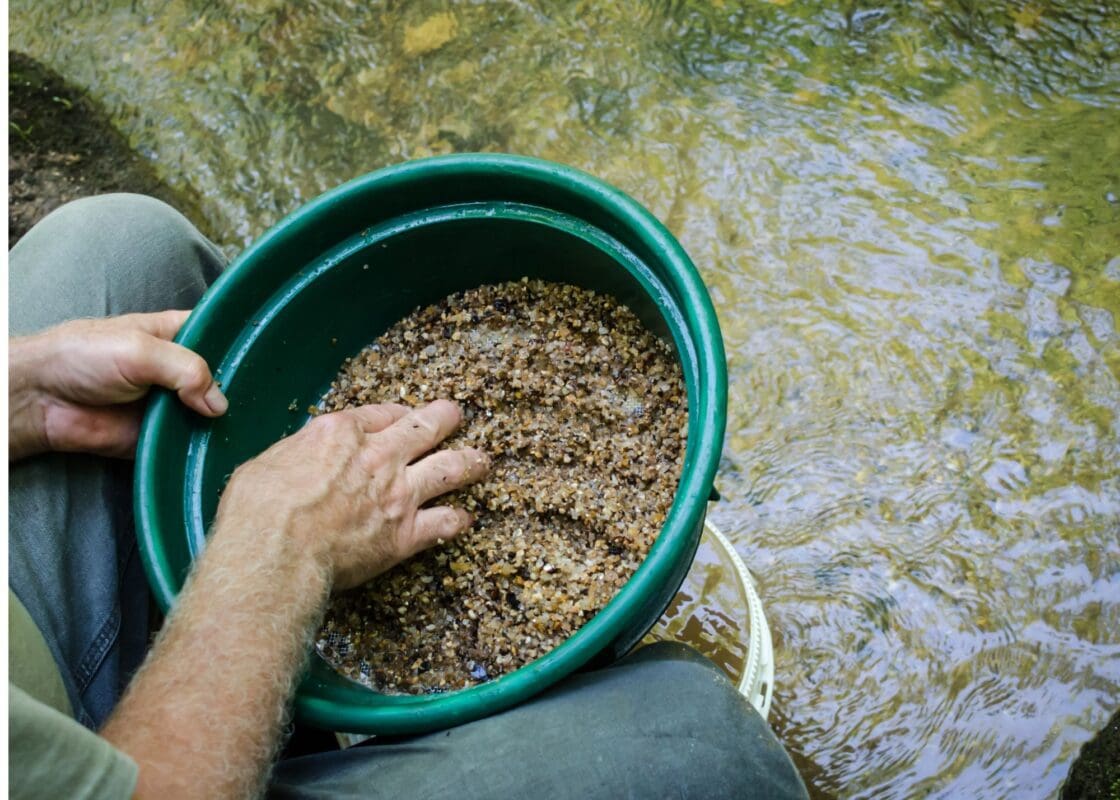Gem Mining FAQs: Your Questions Answered
Embarking on the exciting journey of gem mining can be a rewarding and educational experience for rock enthusiasts and collectors of all ages. This comprehensive guide answers 21 of the most commonly asked questions about gem mining, offering insights into the equipment needed, environmental impact, and the thrill of discovering precious stones. Each section is designed to equip you with the knowledge to explore the world of gems with confidence and respect for our planet.
1. What Equipment is Needed for Gem Mining?
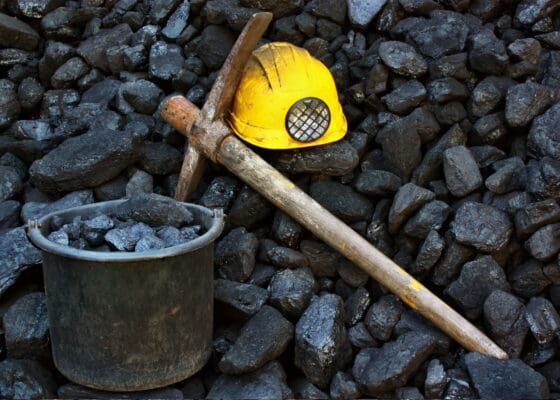
Embarking on a gem mining adventure is an exciting experience, but having the right equipment is essential for a successful and safe expedition. Miners rely on specific tools designed to facilitate the extraction process and ensure safety. Shovels and pickaxes are instrumental for digging through the earth to uncover gem-bearing soils and rocks. Buckets and sieves play a crucial role in washing and sifting through the material, effectively separating precious gems from the surrounding soil.
Safety cannot be overstated in the world of gem mining. Helmets are a common sight, offering protection from falling rocks and debris. Gloves ensure a firm grip and safeguard hands from cuts and abrasions, while boots with sturdy grips are a necessity for navigating the often slippery and uneven terrains of mining sites.
2. Are the Crystals in National Geographic Kits Real?
Indeed, the crystals enclosed in National Geographic kits are genuine, offering an enriching and authentic experience for budding geologists and rock enthusiasts. These kits serve as a gateway to the diverse and mesmerizing world of crystals, providing hands-on experience and insights into various types of crystals and their unique formations. Each kit is a treasure trove of real crystals, meticulously curated to offer educational and aesthetic value to rock collectors of all ages.
3. Is Gem Mining Bad for the Environment?

The intersection between gem mining and environmental conservation is a delicate one. While the quest for precious stones can be exhilarating, it is also accompanied by potential environmental impacts. Deforestation, soil erosion, and habitat destruction are some of the challenges associated with gem mining. However, the adoption of responsible and sustainable mining practices is a significant stride towards mitigating these impacts. Stricter regulations and innovative technologies are continually being developed to ensure that the thrill of gem discovery doesn’t come at the expense of our planet’s health and biodiversity.
4. Are the Gems in Gem Mining Real?
The allure of gem mining lies in the promise of unearthing real, authentic gemstones. Miners can discover a variety of gems, from common stones like quartz to rare and valuable treasures like diamonds and rubies. The authenticity of these gems is unquestionable, each piece a testament to the earth’s ability to create natural art. The types of gems uncovered are as diverse as the geographical locations where mining occurs, each region offering a unique array of stones, characterized by distinct colors, shapes, and sizes. Every gem extracted is a genuine piece of the earth’s legacy, waiting to be discovered, admired, and cherished.
5. What is the Rarest Gem in Real Life?
Painite, a gem that once held the title as the rarest mineral on Earth, is a captivating gemstone that has intrigued gem enthusiasts and collectors for years. This borate mineral, first discovered in Myanmar in the 1950s, was so rare that for several decades, only two crystals were known to exist. Its rarity and enigmatic presence have made it a sought-after gem in the world of collectors. However, the discovery of additional deposits has made this gem slightly more accessible, yet it retains its status as one of the rarest gems in the world. Its deep brown to reddish-brown hue, coupled with its hexagonal crystal structure, adds to its unique appeal.
6. What State has the Most Gems?

Idaho, affectionately known as the “Gem State,” is a haven for gem enthusiasts. The state is renowned for its abundant deposits of a diverse array of gemstones. Garnets, opals, and the exquisite star garnets – Idaho’s state gem – can be found in abundance, making it a popular destination for both amateur and professional gem collectors. The state’s diverse geological landscape, rich in minerals, provides the perfect environment for the formation of these natural treasures, each telling a unique story of the land from which it was birthed.
7. Where are Rubies Found in the USA?
The quest for rubies, one of the most coveted gemstones globally, leads to the picturesque landscapes of North Carolina. Nestled within the serene environs of the Cowee Valley, gem enthusiasts and professionals alike can indulge in the experience of mining this precious stone. The valley, rich in mineral deposits, offers a unique opportunity to unearth rubies in their natural habitat, a thrilling experience that combines the beauty of nature with the excitement of discovery.
8. What Gemstones are Only Found in the US?
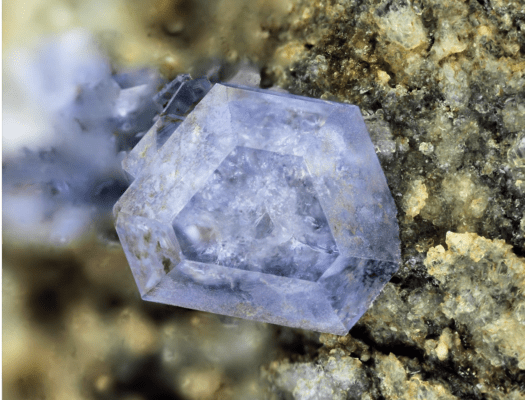
Benitoite, a gem of mesmerizing beauty and rarity, calls the United States home. As the state gem of California, benitoite is found exclusively in the San Benito River area. Its striking blue hue, akin to the depths of the ocean, and its unique crystal structure make it a gemstone of significant interest to collectors and enthusiasts. The rarity of benitoite adds an element of mystique, making the experience of discovering this gem akin to unearthing a hidden treasure.
9. Where are Gems Most Likely to be Found?
The earth, in its infinite creativity, houses gems in a variety of geological settings. Mineral-rich environments, characterized by their unique geological features, are the birthplaces of these natural treasures. Regions marked by volcanic activity, the grandeur of mountainous terrains, and the convergence of tectonic plates are often rich in gemstones. Each gem, formed under specific conditions and influenced by its environment, carries within it a unique signature, a testament to the diversity and richness of the earth’s geological tapestry.
10. What is the Easiest Gem to Find?
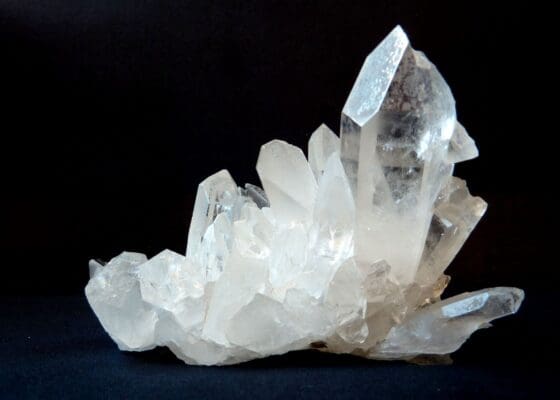
Quartz, with its diverse forms and widespread occurrence, is one of the most accessible gems to find. Its presence spans various regions globally, gracing landscapes with its distinct crystal formations. Quartz is found in an array of colors and shapes, each variant adding a unique touch to the world of gemstones. Its adaptability to diverse geological environments and its abundance make quartz a gem that can be discovered by enthusiasts of all levels, offering an entry point into the enchanting world of gem collecting.
11. How Rare is it to Find a Gem?
The experience of unearthing a gem is as varied as the stones themselves. While some gems like quartz are abundant and relatively easy to find, others, such as red beryl, are treasures that are seldom encountered. The rarity is influenced by factors including the gem’s composition, the geographical location, and the conditions required for its formation. Each gem-hunting expedition is a dance with chance, where the earth may reveal its hidden treasures to the fortunate and the observant. Every discovery, whether of a common or rare gem, is a moment of connection with the natural world, a reminder of the earth’s capacity to create beauty in myriad forms.
12. What is the Most Common Gem to Find?
Quartz reigns as the most common gemstone, gracing various regions of the world with its presence. Its versatility is showcased in its array of colors, shapes, and sizes, each variant a testament to quartz’s adaptability and abundance. From the clear, mystical allure of crystal quartz to the deep, enigmatic tones of smoky quartz, each type offers a glimpse into the dynamic world of gemstones. Quartz’s presence in diverse geological environments makes it a familiar find for gem enthusiasts, a stone that bridges the worlds of the common and the extraordinary.
13. What Gem is Rarer than Diamond?
In the hierarchy of gemstone rarity, red beryl, or bixbite, occupies a distinguished position. Its scarcity surpasses that of diamonds, making it a gem that is both highly sought after and elusive. Primarily found in Utah, red beryl’s mesmerizing red hue is a spectacle of nature’s artistry, a color that captures the essence of fire and passion. Each crystal, a rare spectacle of beauty, is a reminder of the earth’s ability to surprise, delight, and mesmerize with its creations.
14. What Rock is Gold Found in?
The allure of gold has captivated humanity for centuries, a metal that symbolizes wealth, power, and beauty. Quartz rocks are often the guardians of this precious metal, housing it within their structures. The veins of gold embedded in quartz rocks are a sight to behold, where the contrast between the clear or milky white quartz and the lustrous gold creates a visual spectacle. It is within these rocks that the journey of gold, from its formation to its discovery, unfolds, a narrative of the earth’s alchemy.
15. What Rocks have Gold in Them?
The quest for gold often leads to the discovery of quartz and pyrite rocks, the natural sanctuaries of this precious metal. Gold, with its lustrous yellow hue, is often found embedded in these rocks, its veins weaving through the stone, marking its presence. Each vein is a narrative of the earth’s geological processes, a story of heat, pressure, and time. The discovery of gold within quartz and pyrite is not just an encounter with a precious metal but a moment of connection with the earth’s geological and historical tapestry.
16. What Rock is Mistaken for Gold?
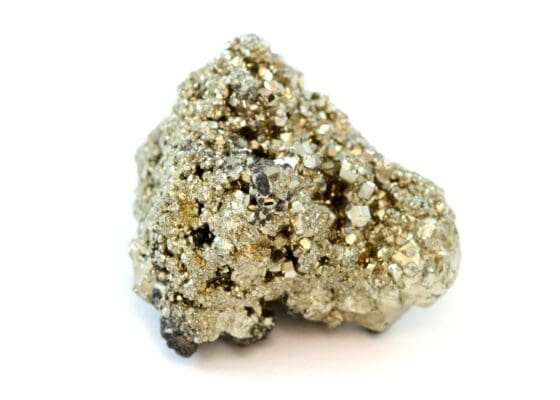
Pyrite, with its captivating metallic luster and golden hue, has earned the moniker “fool’s gold” for its deceptive resemblance to the precious metal. It’s not uncommon for prospectors and enthusiasts to encounter pyrite during their quests for gold. The mineral, often found in similar environments as gold, can easily be mistaken for it at first glance. However, upon closer inspection, the differences in structure, hardness, and other physical properties become apparent, distinguishing the illustrious gold from its doppelganger, pyrite.
17. What Does Raw Gold Look Like?

The sight of raw gold is one that ignites excitement and awe. Characterized by its yellow, soft, and shiny metallic allure, raw gold is nature’s treasure often found mixed with quartz or embedded within rock formations. Its natural luster, untouched by human refinement, gleams with a promise of wealth and luxury. Each nugget or flake, unique in its shape and size, is a testament to the earth’s ability to conceal within its depths, treasures that have captivated the human imagination for centuries.
18. What Type of Soil is Gold Found in?
The quest to uncover gold leads to soils rich in iron and minerals. These soils, often characterized by their proximity to quartz and other rock formations, are the silent keepers of golden treasures. The presence of gold within these soils is a narrative of geological processes, where elements combine, and conditions converge to create the environment for gold’s formation. Each grain of soil, enriched with minerals, is a part of the intricate tapestry of the earth’s geological narrative.
19. Do Any Plants Have Gold in Them?
Nature, in its infinite wisdom, has enabled certain plants to absorb gold particles from the soil. The eucalyptus tree, for instance, has been found to contain gold particles within its leaves. This remarkable phenomenon is a dance between the biological and geological worlds, where roots extract the precious metal from the soil, transporting it to the leaves. Although the amounts are minimal and not visible to the naked eye, the presence of gold within these plants is a testament to the interconnectedness of life and the earth’s elements.
20. What are the Signs of Gold?
The indicators of gold’s presence are often written in the language of the earth’s geological features. Quartz rocks, with their distinct formations, often signal the proximity of gold. Soils stained with iron and rich in minerals whisper of the golden treasures concealed within their depths. Geological features, including ancient riverbeds and mountainous terrains, are often the silent custodians of gold, their structures and formations a canvas where the narratives of gold’s formation and existence are painted.
21. What Color is Raw Gold?
Raw gold, with its bright, metallic yellow hue, is a sight that has symbolized wealth and luxury throughout human history. The color, reminiscent of the sun’s radiant glow, can vary depending on the gold’s purity and the minerals mixed with it. Each variation in color is a chapter in the narrative of the gold’s journey from the depths of the earth to the hands of those fortunate to encounter it. The luster and hue of raw gold are nature’s artwork, a spectacle of beauty and value intertwined.
Conclusion
Gem mining is a fascinating endeavor that invites rock enthusiasts and collectors into a world of discovery, beauty, and connection with the earth. Armed with the right knowledge and tools, every exploration promises the potential unveiling of nature’s hidden treasures. Always remember to mine responsibly, respecting the environment and the ecosystems that house these precious stones. Happy mining!

